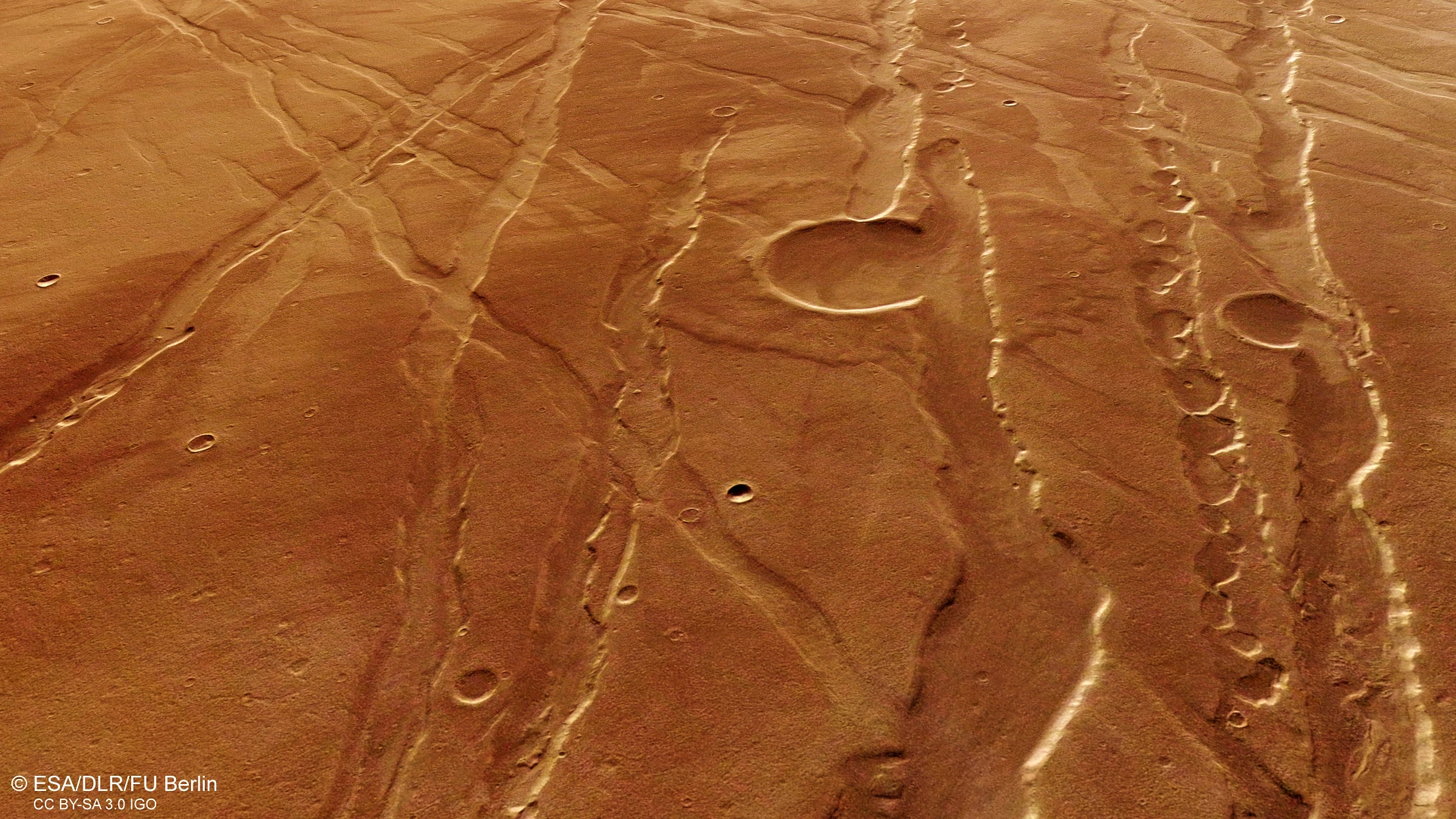The Mars Express orbiter has been circling the Red Planet for close to 14 years now, delivering a steady stream of extraordinary images and valuable scientific data. The latest image from the orbiter, just released by the European Space Agency, was taken on the 19th June, 2017 and shows a rare upside-down, wide-angle view of Mars with its icy northern polar cap at the bottom.
Mars Express was the first major interplanetary mission for the European Space Agency. Alongside the orbiter, it carried a lander called Beagle 2, which sadly didn't successfully reach the surface and was officially declared lost in February 2004. Over a decade later, NASA spotted the Beagle 2 on the surface of Mars, revealing the lander did in fact successfully touch down but had failed to deploy its solar panels.
The orbiter, on the other hand, has been successfully sending back magnificent images of the Red Planet for years now. Although there's really no right way up in space, planets are generally shown with the north pole at the top and south pole at the bottom, but this latest wide-angle scan gives us an unusual "upside-down" perspective, with the equator at the top and the north pole at the bottom.
The image was taken with a high-resolution stereo camera incorporating all nine channels of data (one nadir, four color and four stereo) as the spacecraft flew from north to south on 19 June while calibrating the high-resolution stereo camera.

As well as offering a gorgeous snapshot of Mars' northern polar cap, the image highlights one of the planet's giant volcanos. In the top third of the image we see Alba Mons, the largest volcano on Mars by area with a diameter of 1,000 km (621 mi). Looking above Alba Mons we come across Ascraeus Mons, the second tallest volcano on the planet with a peak covered by clouds 15 km (9.3 mi) high.

Take a look through our gallery for a closer look at the some of the stunning images captured by Mars Express over the past 14 years.
Source: ESA




































































